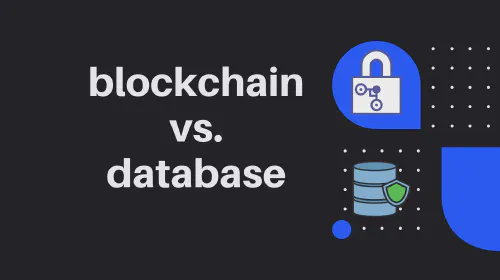Online Shopping Safety: Protecting Your Personal Information from Cybercrimes
Salomon Kisters
Jun 16, 2023This post may contain affiliate links. If you use these links to buy something we may earn a commission. Thanks!
Welcome to our latest blog post, where we’ll be delving into the world of online shopping and cyber security. With the exponential growth of online shopping, there are increasing concerns about the safety of personal information in online transactions. While shopping on the Internet has never been more convenient, it’s important to consider the potential risks associated with it.
Hackers and cybercriminals are constantly on the prowl, looking for vulnerable consumers who are careless about their online security. With the rise of e-commerce, there has also been a surge in online fraud, identity theft, and other cyber crimes aimed at exploiting online shoppers. In light of these concerns, we’ve decided to conduct a thorough analysis of the safety of online shopping.
In this blog post, we’ll explore the various risks associated with online shopping and provide actionable tips to help you safeguard your personal information and protect yourself from cyber-attacks. From using secure payment gateways to avoiding suspicious emails, we’ll provide you with all the tools you need to shop safely online. So, without further ado, let’s dive into the world of cyber security and online shopping.
The Importance of Strong Passwords
One of the simplest yet most effective ways to protect your online shopping accounts from cyber attacks is to have a strong password. A strong password is a combination of letters, numbers, and special characters that is difficult for hackers to guess or crack.
Many online shoppers make the mistake of using simple, easy-to-guess passwords like ‘123456’ or their pet’s name. These passwords can be easily cracked by hackers using sophisticated software and tools. Once a hacker gains access to your account, they can make purchases, steal your personal information, and even commit identity theft.
To create a strong password, you should use a mix of uppercase and lowercase letters, numbers, and special characters. Avoid using common words or phrases, as these can be easily guessed by hackers. It’s also important to use a different password for each online shopping account to prevent hackers from accessing multiple accounts with a single password.
Additionally, you should change your password frequently and enable two-factor authentication whenever possible. Two-factor authentication provides an extra layer of security by requiring a code from your phone or email to log in to your account!
Tips to Identify Fake Websites and Scams
Online shopping has become an integral part of our lives, providing us with convenience, amazing deals, and almost anything we want just a few clicks away. However, the downside of online shopping is the potential for scams and fake websites that are designed to steal our personal information and money. Here are some tips to help you identify fake websites and scams:
Check the URL: Before entering any personal or financial information, check the URL carefully. Some fake websites use URLs that are very similar to legitimate websites but with slight variations, such as misspellings or extra words. Also, ensure that the website’s URL begins with “https://” instead of “http://”, as this indicates a secure connection.
Look for Trustmarks: Trustmarks are symbols or logos displayed on websites indicating that the website is secure and trustworthy. Look for trustmarks such as an SSL certificate, “Norton Secured” or “McAfee Secure”, and others that certify the website to be secure.
Do Your Research: Before making any purchase from a new or unfamiliar website, it’s important to do some research. Read reviews, check the company’s ratings and verify their social media presence on various platforms. Also, verify the contact details of the company provided on their website and that they match the contact details mentioned on their social media accounts.
Don’t be Tempted by Super Deals: Be cautious of online deals that appear too good to be true. Fake websites often attract customers by offering unrealistic discounts on products or services, which may end up being scams.
Avoid Public Wi-Fi: Using secure networks is essential for online shopping. Avoid using public Wi-Fi hotspots, as they are not always secure and may be vulnerable to cyber-attacks. Always use an encrypted connection, such as your home Wi-Fi network or a private hotspot.
Best Practices for Safe Financial Transactions Online
Now that you know how to identify fake websites and scams, it’s important to take additional steps to ensure safe and secure financial transactions. Here are some best practices to follow:
Use Strong Passwords: When conducting online transactions, use strong passwords that include a combination of upper and lower-case letters, numbers, and special characters. Avoid using easily guessable passwords such as names, birthdates, or common words.
Enable Two-Factor Authentication: Two-factor authentication adds an extra layer of security to your financial transactions. It requires you to provide a second form of identification, such as a code sent to your phone, in addition to your password.
Be Careful with Personal Information: Avoid giving out unnecessary personal information when conducting financial transactions online. Only provide the minimum required information needed to complete the transaction and never share sensitive information such as your social security number.
Use Trusted Payment Methods: Use payment methods such as credit cards or PayPal that offer fraud protection and are widely recognized. Avoid using virtual currencies or wire transfers, as these are often used in scams.
Keep Your Device Updated: Keep your device updated with the latest security patches and antivirus software to protect against cyber attacks. Malware and viruses can steal your personal information and compromise your device’s security.
Role of Two-Factor Authentication in Ensuring Secure Online Shopping
Two-factor authentication (2FA) is a security process that requires users to provide two forms of identification to access their accounts. This process is widely used by financial institutions and major online marketplaces to ensure secure online shopping.
In addition to providing a password, 2FA requires users to provide a second form of identification, such as a code sent to their phone or a fingerprint scan, to access their account. This extra layer of security adds an additional barrier for cybercriminals looking to gain access to sensitive information.
Many major online retailers and financial institutions have implemented 2FA as a mandatory requirement for accessing accounts. This has helped to significantly reduce the risk of fraudulent transactions and identity theft.
By enabling 2FA for your online shopping accounts, you can rest assured that your transactions are secure and your personal information is protected. It’s essential to take advantage of any added security measures that are available to you to keep your financial information safe from cyber threats.
Risks of Public Wi-Fi Networks for Online Shopping
Public Wi-Fi networks are a convenient way to stay connected while on the go, but they come with serious security risks. When you connect to a public Wi-Fi network, your device becomes vulnerable to cyber-attacks. This is because public Wi-Fi networks are often unsecured and can be easily accessed by hackers.
When you use a public Wi-Fi network for online shopping, you are putting your personal and financial information at risk. Cybercriminals can use software to intercept data transmitted over the network and steal your sensitive information, such as your credit card details and passwords.
Even if a public Wi-Fi network is password protected, it’s still not completely secure. Cybercriminals can easily obtain the password through various means, including social engineering tactics and phishing scams.
To protect yourself from the risks of public Wi-Fi networks, it’s best to avoid using them for online shopping altogether. If you must use a public Wi-Fi network, be sure to use a virtual private network (VPN) to encrypt your data and keep it secure. Additionally, avoid accessing sensitive information, such as your bank account or credit card details, while on a public Wi-Fi network.
The convenience of a public Wi-Fi network is not worth the risk of a cyber attack. It’s crucial to take proactive measures to protect yourself and your personal information when shopping online.
Conclusion
To ensure a safe and secure online shopping experience, it’s essential to take proactive measures to protect your personal information. While the risks of cyber-attacks may seem daunting, there are several steps you can take to safeguard your online shopping experience.
First and foremost, always use a secure and trusted internet connection when shopping online. Avoid using public Wi-Fi networks whenever possible, and never access sensitive information like your credit card details or bank account information while on a public network.
If you do need to use a public Wi-Fi network, make sure to use a VPN to encrypt your data and keep it secure. A VPN will create a secure connection between your device and the internet, preventing hackers from intercepting your data.
Additionally, opt for secure payment methods like credit cards and PayPal, which offer extra layers of protection against fraud and unauthorized transactions. Always keep your software up-to-date and use strong, unique passwords for all of your online account
Stay informed with the latest insights in Crypto, Blockchain, and Cyber-Security! Subscribe to our newsletter now to receive exclusive updates, expert analyses, and current developments directly to your inbox. Don't miss the opportunity to expand your knowledge and stay up-to-date.
Love what you're reading? Subscribe for top stories in Crypto, Blockchain, and Cyber-Security. Stay informed with exclusive updates.
Please note that the Content may have been generated with the Help of AI. The editorial content of OriginStamp AG does not constitute a recommendation for investment or purchase advice. In principle, an investment can also lead to a total loss. Therefore, please seek advice before making an investment decision.

US Government Bitcoin Ownership: Acquisition, Handling, and Impact Explained
Learn about the US government's acquisition, handling, and impact of Bitcoin, including seizures and auctions. Discover the government's growing role in the cryptocurrency market.

How Many Consensus Algorithms Are There? An Overview
Proof of Work is just one of many consensus algorithms out there. But how many are there?

Blockchain vs Database: Key Differences Explained
Understand the key differences between Blockchain and Database, from decentralization to security, in this detailed comparison.
Protect your documents
Your gateway to unforgeable data. Imprint the authenticity of your information with our blockchain timestamp